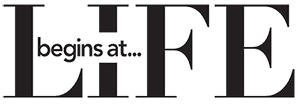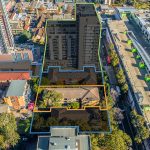[hr]Whether it’s your first or your 15th caravan, it’s important to make sure you’re staying safe. Without a Hitch provides hints and tips for caravan safety on and off the road.[hr]
 Firstly, you’ve got to be familiar with your caravan. Learn what all the functions are, how to change a tyre, how to check the motor and which lights indicate what. Find out where everything is and make sure you have at least a basic understanding of how the caravan connects to your car. A good tip for new caravanners is to take a towing class, or even have a practice run but staying in a local caravan park to test the ropes. That way, if something goes wrong, you’re not far from home.
Firstly, you’ve got to be familiar with your caravan. Learn what all the functions are, how to change a tyre, how to check the motor and which lights indicate what. Find out where everything is and make sure you have at least a basic understanding of how the caravan connects to your car. A good tip for new caravanners is to take a towing class, or even have a practice run but staying in a local caravan park to test the ropes. That way, if something goes wrong, you’re not far from home.
Secondly, inspect the caravan exterior. Obviously, the consumables (fuel and water) can be dealt with once you’re on the road, but tempers will flare if you hit a caravan park at dinnertime, unable to heat a meal. For exterior safety, check that:
- The coupling is secured to tow vehicle
- The safety chains are in good condition and properly secured to both drawbar and tow vehicle
- The handbrake engages and releases cleanly (and remains released before you set off)
- The tow bar wiring insulation is in good shape and that the plug and socket are free from dirt before connecting
- The lights work (brakes, indicators, reverse, parking lights, side lights, and number plate). You’ll need someone else to be your eyes for this
- The tyres are in good condition and pumped to correct pressure
- All wheel nuts present and tightened
- The battery is in good condition and charged
- The brakes engage and release (run it around the block before leaving)
- Your jockey wheel is there, either raised and secured or stowed away
- Your spare tyre is there and pumped up
- Your caravan’s corner stabilisers work and are fully raised
- The water tank is full
- The gas bottles are full, turned off and secured
- Any other tools, accessories, awnings and aerials are secured
- The 240V mains is disconnected
Next comes the caravan interior. Safety best practice inside a caravan is really all about securing everything that could break, cause damage, or make a mess. To avoid this, check that:
- The fire extinguisher is present, in good condition and not expired
- The fridge door is secured
- The fridge has adequate ventilation
- Cupboards, drawers and doors are closed and secured
- Your payload (items stored inside the caravan) does not exceed the maximum recommended by the manufacturer
- Food, drinks and odds and ends are packed away
- Any open windows are closed in case you hit rain or dust
- Both 240V and 12V electrics work
- The gas and electrics are turned off
- Interior lights work
- You have spare light bulbs and tubes
- Water pumps and drains are clear and flow freely
- The toilet operates
- The toilet cassette is emptied
- You have toilet chemicals
For any caravanner, it’s a good idea to keep a toolbox handy for emergency, including a jack, wheel brace and chocks, tyre blocks and a jack plate.
Finally, before setting out, check the latest weather report for your current location and destination so you have an idea of what you can expect to encounter.
[related_ad category=”995″ max_size=”3″ title=”Related Offers”]
[related_ad category=”895″ max_size=”3″ title=”Related Stories”]



















Add Comment